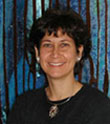Mammography screenings for breast cancer show racial and ethnic disparities

Rebecca Smith-Bindman, MD -----
Inadequate use of screening mammography may be an important reason that African-American women are more likely to be diagnosed with advanced stage breast cancer than members of other ethnic groups, according to a new study led by a University of California, San Francisco imaging specialist.
Results from the six-year study analyzing data from mammograms of 1 million women 40 years of age and over are reported in the April 18 issue of the Annals of Internal Medicine.
Through the 1990s, mortality rates from breast cancer in the United States decreased as the use of mammography increased. These decreases primarily benefited non-Hispanic white women, whereas the mortality rate for African-American women changed very little, according to the research team.
“We found significant differences in the patterns of mammography by race and ethnicity. All minority women were significantly more likely to be inadequately screened with mammography than white women,” said Rebecca Smith-Bindman, MD, lead investigator and UCSF associate professor in the departments of radiology, epidemiology and biostatistics, and obstetrics, gynecology and reproductive sciences. “It was important to determine whether the use of mammography was the reason for the racial and ethnic differences in breast cancer. There has been an ongoing debate whether biology, or use of screening mammography, is primarily the cause for the racial and ethnic differences in outcomes.”
The researchers linked data from mammography and tumor registries from facilities that form the Breast Cancer Surveillance Consortium funded by the National Cancer Institute. Surveys completed by patients at each mammography examination included questions on race, ethnicity, presence of breast symptoms and previous mammography use.
“We explored stage of disease at diagnosis, tumor characteristics and lymph node involvement among women of different races and ethnicities whose patterns of mammography use were similar,” Smith-Bindman said.
The data showed that African-American women are more likely to have large, advanced-stage tumors at diagnosis of breast cancer than white women.
Researchers explored mammography use as a possible cause of the racial and ethnic differences in the rates of advanced cancer. They found that white women were more likely to be screened at an interval of one to two years. Compared with 72 percent of white women, only 63 to 68 percent of African-American, Hispanic, Asian and Native American women were frequently screened. African-American, Hispanic and Asian women were more likely to have never undergone screening; therefore they were more likely to have their first mammogram because of a physical examination finding or breast symptom.
For example, 18 percent of white women with breast cancer were inadequately screened with mammography prior to breast cancer, while 34 percent of African-American, 24 percent of Hispanic and 27 percent of Native American women were inadequately screened before their breast cancer diagnosis.
“Most of the differences in breast cancer characteristics at diagnosis were eliminated once we grouped women by their patterns of mammography use. Women who had undergone similar screening had similar types of tumors, irrespective of race and ethnicity. We can conclude that underuse of mammography may be an ongoing issue,” said Smith-Bindman. “While Asian and Native American women had significantly lower rates of large, advanced stage tumors than white women, they also tended to underutilize mammography. Thus, these women could possibly reduce their burden of advance-stage disease even further if they increase their use of screening mammography.”
Over the past two decades, health agencies on the federal and state level have made efforts to increase mammography use through outreach programs to underserved women. According to the study, some minority groups do not undergo regular screening and this is probably attributable to a combination of factors that may include financial barriers, difficulty in accessing facilities that perform mammography, and multiple personal and cultural reasons for choosing not to undergo screening.
“Additional work needs to be done to understand how to improve outreach and provide screening to these women,” said Smith-Bindman. “It seems that many women do not undergo routine mammography. Increased use of mammography screening may enable discovery of tumors before they have progressed to an advanced stage and result in decreased mortality rates.”
Co-authors of the study are Diana L. Miglioretti, PhD, Group Health Cooperative, Seattle, WA; Nicole Lurie, MD, MSPH, RAND Corporation, Arlington, VA; Linn Abraham, MS, Group Health Cooperative, Seattle, WA; Rachel Ballard Barbash, MD, MPH, National Cancer Institute, NIH, Bethesda, MD; Jodi Strzelczyk, PhD, University of Colorado Health Sciences Center, Denver, CO; Mark Dignan, PhD, University of Kentucky, Lexington, KY; William E. Barlow, PhD, Cancer Research and Biostatistics, Seattle, WA; Cherry M. Beasley, MS, RNCS, University of North Carolina-Pembroke, Pembroke, NC; and Karla Kerlikowske, MD, University of California, San Francisco.
The study was funded through grant support from the UCSF Mount Zion Dean’s Office, the California Breast Cancer Research Program, the Department of Defense Congressional Directed Medical Research Program, and the National Cancer Institute.
UCSF is a leading university that consistently defines health care worldwide by conducting advanced biomedical research, educating graduate students in the life sciences, and providing complex patient care.